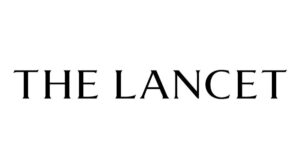 Summary
Summary
The massive scale-up of HIV treatment and prevention over the past two decades has resulted in important reductions in new infections and mortality globally. Reduction in HIV incidence, however, has been unequal, with worsening epidemics in regions where the reach and scale of HIV control programmes have been insufficient, especially in eastern Europe, central Asia, the Middle East, north Africa, and Latin America where HIV epidemics are concentrated among key populations, including people who inject drugs, men who have sex with men, transgender people, and some minority racial and ethnic groups. The global state of the HIV pandemic highlights disparities in HIV control efforts and provides a roadmap for what should be done, including investment to better implement the effective HIV prevention and treatment tools that are available, but whose adoption and scale-up are not yet sufficient to get us close to an AIDS-free generation. To achieve the full potential of global HIV control, we call for urgent, evidence-informed implementation at scale of our existing and novel HIV prevention and treatment strategies in ways that are better, faster, more efficient, and cost-effective, especially in key populations and regions where the HIV pandemic continues to expand.
Introduction
The HIV pandemic and its consequences have caused over 40 million deaths since it was first recognised over 40 years ago. Despite the many successes in HIV prevention and treatment, global efforts to control the pandemic are in jeopardy. In 2021, an estimated 1·5 million adults and 160 000 children became infected with HIV and 552 000 adults and 98 000 children died.1, 2 38 million adults and 1·7 million children younger than 15 years have HIV. The negative effects of HIV on individuals, health-care systems, communities, economics, and politics, are felt in nearly every society globally. The early optimism for controlling the HIV pandemic that arose from advances in diagnostics, treatment, and prevention of HIV has been tempered by the continued spread of the virus and the challenge of providing lifelong antiretroviral therapy (ART) and supportive care to a very large number people with HIV. Global ART service scale-up increased from coverage of under 1·0 million people with HIV in 2000 to 7·5 million in 2010; due to concerted effort, commitment, and funding from multilateral, bilateral, and domestic sources, the number of people with HIV on ART increased to 28·7 million in 2021. Consequently, a staggering 16·5 million HIV-related deaths were averted between 2001 and 2021.1, 2 In 2022, over US$18 billion was allocated for HIV treatment and prevention, mostly in low-income and middle-income countries (LMICs), from the United States President’s Emergency Plan for AIDS Relief (PEPFAR) and the Global Fund Against AIDS, Tuberculosis and Malaria (GFATM).3, 4 To control the HIV pandemic, the 2030 UNAIDS 95-95-95 targets specify that 95% of all people with HIV should know their HIV status, 95% of all people with diagnosed HIV infection should be on ART, and 95% of all people receiving ART should have viral suppression. These 2030 UNAIDS targets note that there is considerable room for improvement to achieve these goals.
Some countries have responded to these goals more effectively than others. The good news is that massive ART scaleup worldwide has resulted in effective HIV treatment as prevention causing a 45% decline in mortality since 2010 and a large reduction in HIV transmission.1, 2 Globally, the estimated number of new HIV infections in 2021 was 54% lower than in 2001. The greatest effect of ART scale-up was observed in sub-Saharan Africa, which has the largest number of people with HIV worldwide (roughly 60% of the world’s total). From 2010 to 2021, the number of new HIV infections in sub-Saharan Africa decreased by about 40%. However, the number of new infections increased alarmingly by 33% in eastern Europe and central Asia, where the epidemic is concentrated in people who inject drugs. During the same period, new HIV infections increased by 27% in the Middle East and north Africa and by 11% in Latin America (figure 1).1, 2 In western and central Europe, although there have been declines in new diagnoses over the past decade, incident cases of AIDS more than halved, with an estimated one in eight people with HIV remaining undiagnosed. In the UK, 20% of people with HIV have a transmissible viral load and an estimated 25% of these people are undiagnosed.1 Meanwhile, new HIV infections have decreased by 16% in the USA since 2010 (but only 3% since 2016).



